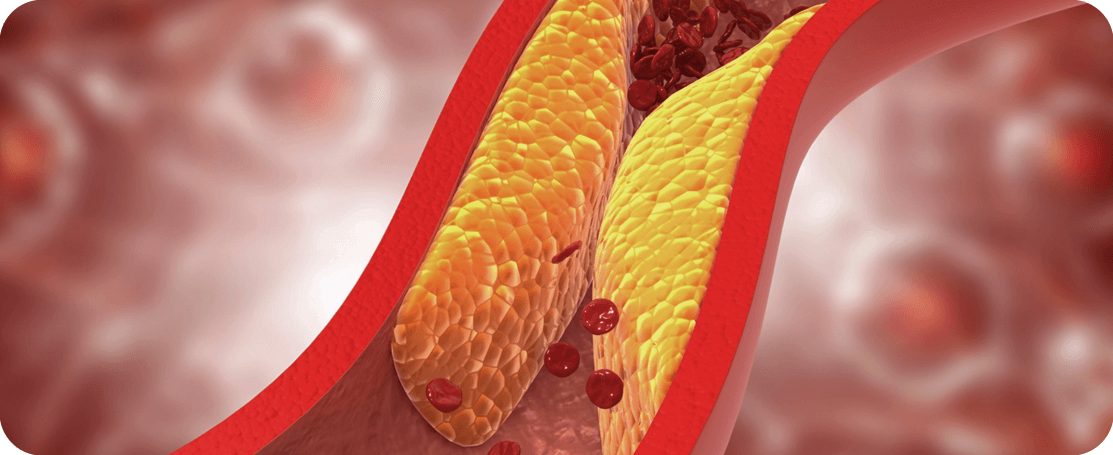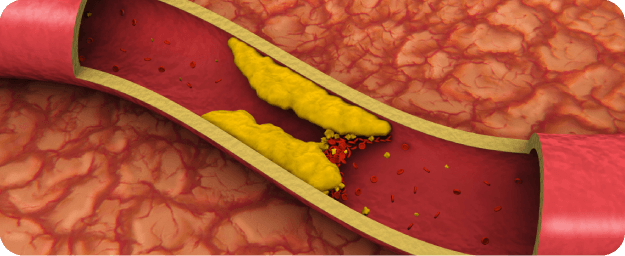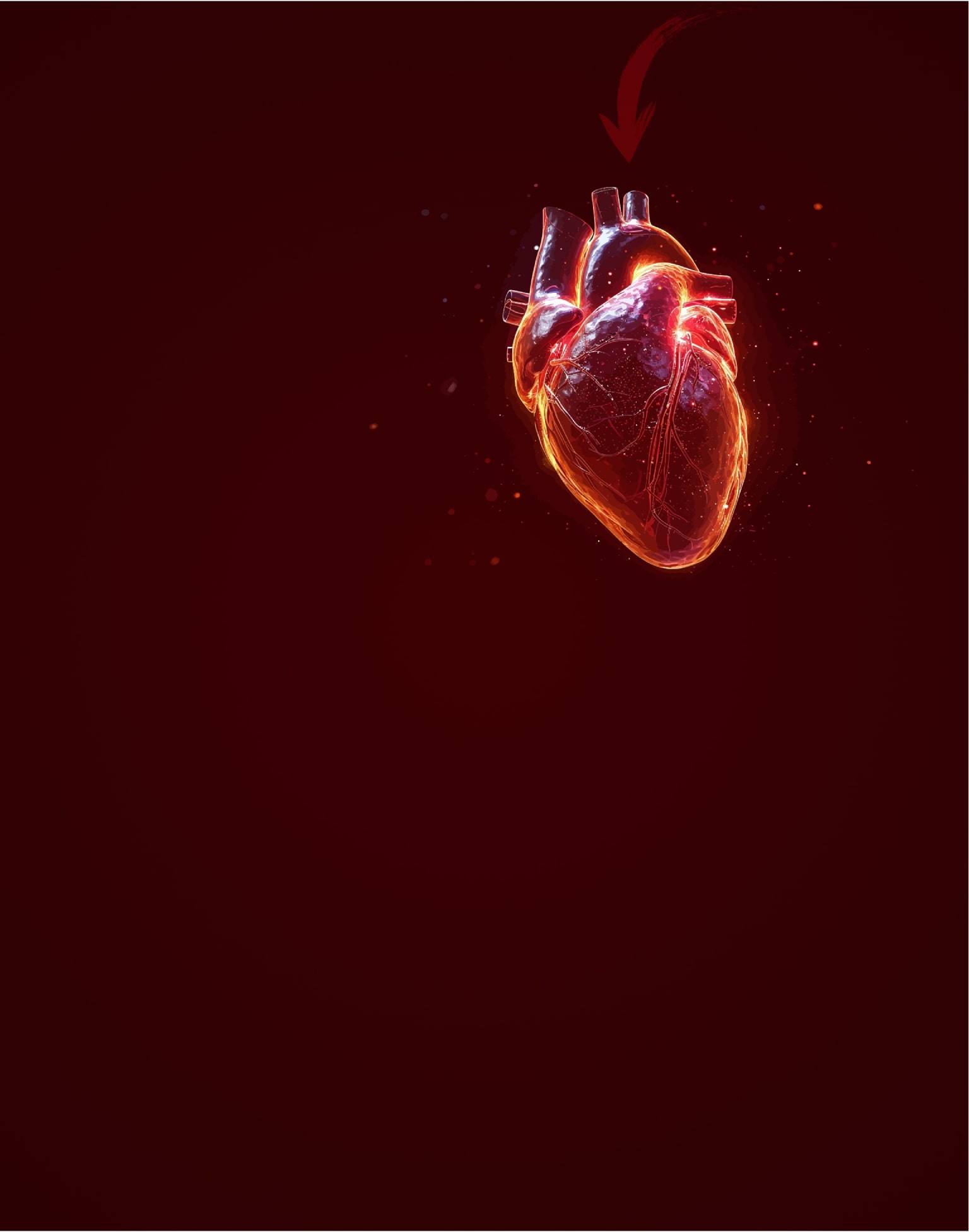

Cholesterol and
Cardiovascular Disease
Cardiovascular disease (CVD) is the leading cause of death globally, representing 32%
of all deaths, more than cancer and chronic lower respiratory disease combined.1-3 Nearly all of
us have either known someone affected by CVD, or been affected by it directly.
A major risk factor for cardiovascular disease is low-density lipoprotein cholesterol (LDL-C). LDL-C is a lipoprotein that, along with its backbone, apolipoprotein B (ApoB), carries most of the cholesterol in the blood.5 When LDL-C levels are high, cholesterol particles can become trapped in artery walls, ultimately leading to a blockage of critical arteries in various organ systems, causing heart attacks and strokes. This process, known as atherosclerosis, is the leading cause of cardiovascular disease.5,6
Many factors can impact a person’s risk of having increased levels of LDL-C, many of which we cannot control:7
- Family history of hypercholesterolemia
- Race/ethnicity
- Increasing age
- Medical conditions (such as chronic kidney disease)
- Certain medications
- Unhealthy lifestyle habits

LDL-C builds up in artery walls.

Deposits can cause vessels to suddenly become blocked—or blood
clots to form—causing a heart attack or stroke.


More Resources
Looking for more information or support to help
you manage cardiovascular disease? Check out our
list of resources from patient advocacy organizations.
1. Cardiovascular diseases (CVDs). World Health Organization. June 11, 2021. Accessed March 5, 2024. https://www.who.int/news-room/fact-sheets/detail/cardiovascular-diseases-(cvds) 2. The top 10 causes of death. World Health Organization. December 9, 2020. Accessed March 5, 2024. https://www.who.int/news-room/fact-sheets/detail/the-top-10-causes-of-death 3. Tsao CW, Aday AW, Almarzooq ZI, et al. Heart disease and stroke statistics—2023 update: a report from the American Heart Association. Circulation. 2023;147(8):e93-e621. doi:10.1161/CIR.0000000000001123 4. Martin SS, Aday AW, Almarzooq ZI, et al. 2024 heart disease and stroke statistics: a report of US and global data from the American Heart Association. Circulation. 2024;149(8):e347-e913. doi:10.1161/CIR.0000000000001209 5. Feingold KR. Introduction to lipids and lipoproteins. In: Feingold KR, Anawalt B, Boyce A, et al, eds. Endotext [Internet]. MDText.com, Inc; 2000–. Accessed March 5, 2024. https://www.ncbi.nlm.nih.gov/books/NBK305896/ 6. Goldstein JL, Brown MS. A century of cholesterol and coronaries: from plaques to genes to statins. Cell. 2015;161(1):161-172. doi:10.1016/j.cell.2015.01.036 7. National Heart, Lung, and Blood Institute. Blood cholesterol: causes and risk factors. Updated March 24, 2022. Accessed February 12, 2024. https://www.nhlbi.nih.gov/health/blood-cholesterol/causes 8. Nurmohamed NS, Ditmarsch M, Kastelein JJP. Cholesteryl ester transfer protein inhibitors: from high-density lipoprotein cholesterol to low-density lipoprotein cholesterol lowering agents? Cardiovasc Res. 2022;118(14):2919-2931. doi:10.1093/cvr/cvab350 9. Lloyd-Jones, D, Morris, P. et al. 2022 ACC Expert Consensus Decision Pathway on the Role of Nonstatin Therapies for LDL-Cholesterol Lowering in the Management of Atherosclerotic Cardiovascular Disease Risk: A Report of the American College of Cardiology Solution Set Oversight Committee. JACC. 2022 Oct, 80 (14) 1366–1418. https://doi.org/10.1016/j.jacc.2022.07.006 10. Gao Y, Shah LM, Ding J, Martin SS. US Trends in Cholesterol Screening, Lipid Levels, and Lipid-Lowering Medication Use in US Adults, 1999 to 2018. J Am Heart Assoc. 2023;12(3):e028205.

